COLLEGE OF MUSIC
Presents
JAZZ ENSEMBLE I
Leon Anderson, Jr., Director
with special guest
David Detweiler, Tenor Saxophone

Leon Anderson, Jr., Director
with special guest
David Detweiler, Tenor Saxophone
Thursday, March 20, 2025
Seven-thirty in the Evening
Ruby Diamond Concert Hall
Live: wfsu.org/fsumusic
A Tone Parallel to Harlem Duke Ellington
Pyramid Duke Ellington
Afro-Bossa Duke Ellington
Satin Doll Duke Ellington arr. Quincy Jones
Something to Live For Billy Strayhorn
Chinoiserie Duke Ellington
Extra Credit Jim McNeely
Mama G Wayne Shorter arr. Christopher Crenshaw
The Three Marias
Armageddon
Teru
Yes or No
Endangered Species
Wayne Shorter arr. Carlos Henriquez
Wayne Shorter arr. Marcus Printup
Wayne Shorter arr. Wynton Marsalis
Wayne Shorter arr. Victor Goines
Wayne Shorter arr. Vincent Gardner
Please refrain from talking, entering, or exiting while performers are playing. Food and drink are prohibited in all concert halls. Please turn off cell phones and all other electronic devices. Please refrain from putting feet on seats and seat backs. Children who become disruptive should be taken out of the performance hall so they do not disturb the musicians and other audience members.
Jazz Ensemble I Personnel
Leon Anderson, Jr., Director
Vocals
Eden Rewa
Saxophone
*Tyler Pauletti, alto saxophone, clarinet, soprano
Carter Hetz alto saxophone, soprano, clarinet
Aidan May, tenor saxophone, clarinet, flute
Owen Robinson, tenor saxophone, clarinet, flute
Brant Rosemann, tenor saxophone, clarinet
Josh Spraker, baritone saxophone, bass clarinet
Trumpet
*Christopher Goldwire
Roman Ullian
Sebastian Gonzalez
Nelson Keakopa-Udofia
Trombone
*Steven Blake
Zach Urbine
August Romaine
Brent Creekmore, bass
Rhythm Section
Blake Dwelle, piano
Asher Pereira, piano
Ari Pereira, guitar
Andres Aybar, bass
Lawrence Turner, drums
John Gonzalez, drums
Jacob Mobley, drums
Alex Bonahue, drums
* Lead player
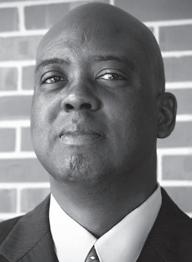
Professor of Jazz Studies Leon Anderson, Jr., joined the Florida State University faculty in 1998. His musical experience includes that of a classical and jazz percussionist, educator, clinician, and composer. Anderson earned the B.A. degree in Music Education at Louisiana Tech University and the M.A. degree in Percussion Performance at Southeastern Louisiana University. His mentors have included Ellis Marsalis, Willis Delony, and Victor Goines of the New Orleans jazz scene, as well as the late bassist Ben Tucker. Anderson currently teaches drum set, jazz ensembles, jazz combo, and jazz history at the FSU College of Music.
In 1997 Anderson was a featured soloist with The Marcus Roberts Trio’s performance with the Los Angeles Philharmonic Orchestra at the Hollywood Bowl and he was the selected drummer for the “Great Saxophone Legends” concert at the Jacksonville Jazz Festival, featuring Jimmy Heath, David Sanchez, Javon Jackson and Red Holloway.
Anderson also has performed with the Baton Rouge Symphony Orchestra and the Louisiana Philharmonic Orchestra in roles of drummer and percussionist. Additionally, he has performed with the Czech National Symphony Orchestra with the Ellis Marsalis Trio; National Orchestra de France with the Marcus Roberts Trio conducted by Seiji Ozawa; Umbria Jazz Festival, Perugia Italy; Ingolstadt Jazztage in Ingolstadt Bavaria; Switzerland Jazz Festival in Basel, Switzerland; North Sea Jazz Festival in Rotterdam, Netherlands, and Ascona Jazz Festival in Ascona, Switzerland.
His professional recordings include Victor Goines’ Joe’s Blues (1998), Marcus Roberts’ Cole After Midnight Vol. 1 (1998); To Those We Love So Dearly (1999) with Victor Goines; Sunrise to Midnight (2000) The Victor Goines Quartet; Five By Design’s Club Swing (2001); Richie Summa’s Tear It Down (2001); Etienne Charles’ Culture Shock (2006); David Detweiler’s New York Stories (2009); Melvin Jones’ (Grammy nominated) Pivot, (2011); Larry Panella’s The Gestures Project (2012); and Joy Road Vol. 2 (The Complete Works of Pepper Adams) with the Kevin Bales Quartet (2017).
His professional collaborations include performances with numerous artists: David Sanchez, Red Holloway, Donald Brown, Wynton Marsalis, Mike Wolf, Nathen Page, Allan Harris, Stephanie Nakasien, Phyllis Hyman, Barry Greene, Dianne Reeves, Harold Baptiste, Donald Harrison, Mary Stallings, Judy Collins, Wessell Anderson, Wycliffe Gordon, Kent Jordan, Oliver Lake, James Moody, Deborah Brown, Rufus Reid, Henry Mancini, Art Farmer, Jason Marsalis, Eric Reed, Sean Jones, Oliver Lake, Delfeayo Marsalis, Victor Goines, Ellis Marsalis, Lou Donaldson, Hank Jones, Ben Tucker, Terence Blanchard, Bunky Greene, Carmen Bradford, Byron Stripling, Jon Faddis, Rodney Whitaker, Terrell Stafford, Marcus Printup, Larry Panella, Melvin Jones, Mace Hibbard, Gary Motley, Nicholas Payton, Alvin Batiste, and many others.
Anderson has also performed at the International Association of Jazz Education Conference with Bunky Green, Ellis Marsalis and the New Orleans Jazz All-Stars, and has served as an artist/clinician for several jazz festivals in the United States, including the Bill Evans Jazz Festival; Savannah Music Festival (Swing Central Jazz); Loyola University (New Orleans) Jazz Festival; Governor’s Honors Jazz Camp; Broward County All-City Jazz Ensemble; “Jazz in the Schools” program in Jacksonville, FL; Florida Music Educators All-State Jazz Ensemble; Louisiana Music Educators All-State Jazz Ensemble, and numerous All-County Jazz Ensembles throughout the state of Florida.
Anderson has also been featured in a review of the jazz composition “Afro Blue” for the text Teaching Music Through Jazz (December, 2007) and an article entitled “JazzEd Scene” by Steve MacQueen, published in Research and Review (Vol. XIV, No. III, Fall, 2004). He also occupies the drum chair in The Jazz Orchestra at the Dr. Phillips Center in Orlando, Florida.
At FSU, Anderson continues to implement innovative ways in an effort to enhance and expand the Jazz Program. Since its inception, the program has grown exponentially and yielded numerous successful students, many of whom have solidified careers nationally in Jazz performance and education.
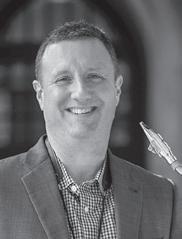
A superior post bop soloist, tenor saxophonist, composer, and educator David Detweiler has been influenced by early John Coltrane and Michael Brecker but has a sound and style of his own within the mainstream of modern jazz.
Detweiler received the DMA degree from the Eastman School of Music in 2015 and the MM degree from Florida State University in 2010. He also studied at both the University of North Texas and William Paterson University, receiving the BM degree from William Paterson. His teachers include Ramon Ricker, Charles Pillow, Bill Kennedy, Gary Smulyan, and Steve Wilson.
Currently Associate Professor of Jazz Saxophone, Detweiler joined the faculty at Florida State University in 2016 after serving as Director of Jazz Studies at Nazareth College (Rochester, NY). He has performed at many of New York City’s premier live-music venues such as The Blue Note, Birdland, The Knitting Factory and The Iridium. His first record as a leader, New York Stories, featured Leon Anderson, Clarence Seay, Chris Pattishall, and Rick Lollar. His second record as a leader, The Dave Detweiler Trio, was released in August 2015. Celebrating Bird with bassist Fumi Tomita was released September 2020 and The Astoria Suite was released in 2021. There Used To Be Rain was released in 2023 on Centaur records.
Detweiler has performed and presented research at numerous conferences including the Jazz Education Network (JEN), the College Music Society (CMS), and the North American Saxophone Alliance (NASA). Detweiler is a P Mauriat and Vandoren artist.
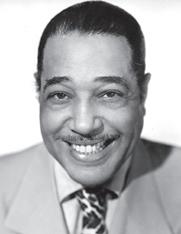
Edward Kennedy “Duke” Ellington (1899–1974) was an American pianist who was the greatest jazz composer and bandleader of his time. One of the originators of big-band jazz, Ellington led his band for more than half a century, composed thousands of scores, and created one of the most distinctive ensemble sounds in all of Western music.
Ellington grew up in a secure middle-class family in Washington, D.C. His family encouraged his interests in the fine arts, and he began studying piano at age seven. He became engrossed in studying art during his high-school years, and he was awarded, but did not accept, a scholarship to the Pratt Institute, Brooklyn, New York. Inspired by ragtime performers, he began to perform professionally at age 17.
Ellington first played in New York City in 1923. Later that year he moved there and, in Broadway nightclubs, led a sextet that grew in time into a 10-piece ensemble. Extended residencies at the Cotton Club in Harlem (1927–32, 1937–38) stimulated Ellington to enlarge his band to 14 musicians and to expand his compositional scope. He selected his musicians for their expressive individuality, and several members of his ensemble were themselves important jazz artists. With these exceptional musicians, who remained with him throughout the 1930s, Ellington made hundreds of recordings, appeared in films and on radio, and toured Europe in 1933 and 1939.
The expertise of this ensemble allowed Ellington to break away from the conventions of band-section scoring. Instead, he used new harmonies to blend his musicians’ individual sounds and emphasized congruent sections and a supple ensemble. He illuminated subtle moods with ingenious combinations of instruments; among the most famous examples is “Mood Indigo” in his 1930 setting for muted trumpet, unmuted trombone, and low-register clarinet. In 1931 Ellington began to create extended works, including such pieces as Creole Rhapsody, Reminiscing in Tempo, and Diminuendo in Blue/Crescendo in Blue.
A high point in Ellington’s career came in the early 1940s, when he composed several masterworks—including “Concerto for Cootie,” his fast-tempo showpieces “Cotton Tail” and “Ko-Ko,” and the uniquely structured, compressed panoramas “Main Stem” and “Harlem Air Shaft”—in which successions of soloists are accompanied by diverse ensemble colours. The variety and ingenuity of these works, all conceived for three-minute, 78-rpm records, are extraordinary, as are their unique forms, which range from logically flowing expositions to juxtapositions of line and mood.
During these years Ellington became intrigued with the possibilities of composing jazz within classical forms. His musical suite Black, Brown and Beige (1943), a portrayal of African-American history, was the first in a series of suites he composed, usually consisting of pieces linked by subject matter. It was followed by, among others, Liberian Suite (1947); A Drum Is a Woman (1956), created for a television production; Such Sweet Thunder (1957), impressions of William Shakespeare’s scenes and characters; a recomposed, reorchestrated version of Nutcracker Suite (1960; after Peter Tchaikovsky); Far East Suite (1964); and Togo Brava Suite (1971). Ellington’s symphonic A Rhapsody of Negro Life was the basis for the film short Symphony in Black (1935), which also features the voice of Billie Holiday (uncredited). Ellington wrote motion-picture scores for The Asphalt Jungle (1950) and Anatomy of a Murder (1959) and composed for the ballet and theatre—including, at the height of the American civil rights movement, the show My People (1964), a celebration of African American life. In his last decade he composed three pieces of sacred music: In the Beginning God (1965), Second Sacred Concert (1968), and Third Sacred Concert (1973).
Although Ellington’s compositional interests and ambitions changed over the decades, his melodic, harmonic, and rhythmic characteristics were for the most part fixed by the late 1930s, when he was a star of the swing era. Ellington’s stylistic qualities were shared by Billy Strayhorn, who increasingly participated in composing and orchestrating music for the Ellington band. During 1939–67 Strayhorn collaborated so closely with Ellington that jazz scholars may never determine how much the gifted deputy influenced or even composed works attributed to Ellington.
The Ellington band toured Europe often after World War II; it also played in Asia (1963–64, 1970), West Africa (1966), South America (1968), and Australia (1970) and frequently toured North America. Despite this grueling schedule, some of Ellington’s musicians stayed with him for decades. For the most part, later replacements fit into roles that had been created by their distinguished predecessors; after 1950, for instance, the Webster-influenced Paul Gonsalves filled the band’s solo tenor saxophone role originated by Webster. There were some exceptions to this generalization, such as trumpeter-violinist Ray Nance and high-note trumpet specialist Cat Anderson.
Not least of the band’s musicians was Ellington himself, a pianist whose style originated in ragtime and the stride piano idiom of James P. Johnson and Willie “The Lion” Smith. He adapted his style for orchestral purposes, accompanying with vivid harmonic colours and, especially in later years, offering swinging solos with angular melodies. His career spanned more than half a century—most of the documented history of jazz. He continued to lead the band until shortly before his death in 1974.
Ellington’s sense of musical drama and of his players’ special talents and his wide range of moods were rare indeed. His gift of melody and his mastery of sonic textures, rhythms, and compositional forms translated his often subtle, often complex perceptions into a body of music unequaled in jazz history. Charles Ives is perhaps his only rival for the title of the greatest American composer.
from Britannica.com/biography/Duke-Ellington

Equally renowned for his compositions as for his saxophone playing, Wayne Shorter (1933–2023) contributed many songs to the jazz canon while participating in some of the major changes in jazz music for more than 50 years. He received 12 Grammy Awards for his recordings and, in 2015, was recognized with a lifetime achievement honor from the Recording Academy.
Shorter’s musical pursuits started on the clarinet, at age 16, evolving to the tenor saxophone soon thereafter. Shorter majored in music education at New York University from 1956-58, working for a short while with Horace Silver in 1956. After serving in the Army, he joined Maynard Ferguson’s band for a couple of months in 1959, followed by one of his most fruitful jobs: playing with Art Blakey’s Jazz Messengers. He remained in the Messengers until 1964, establishing himself as both composer and saxophonist. His three releases for Blue Note in 1964, Night Dreamer, Juju, and Speak No Evil, are considered the quintessential Blue Note sound: sophisticated structures and rhythms, strong melodies, and exceptional playing.
He left Blakey in 1964 to assume another productive affiliation with the Miles Davis Quintet, where he remained until 1970. While with Davis, he further solidified his position as one of the most intriguing composers of his time, contributing tunes such as “Nefertiti,” “Fall,” “ESP,” “Paraphernalia,” and “Sanctuary.” He also developed his sound, a mixture of technique and emotion, able to find the appropriate mood in his playing to fit the song. During the latter stages of his Davis tenure, he took up the soprano saxophone, which thereafter often became his principal horn. In 1971 he and pianist Joe Zawinul, who also had been part of Davis’ recording sessions in the late-1960s to early-1970s, formed one of the pioneering jazz fusion bands, Weather Report. The band stayed together for 15 years through several different permutations, engaging electronics and numerous ethnic influences and furthering Shorter’s reputation as a composer. The band scored a major hit, “Birdland,” in 1977 on their bestselling record, Heavy Weather
After the breakup of Weather Report, Shorter made occasional recordings and tours, continuing to write intriguing music based on the influences from other musical cultures. His work was a major influence on the generations of musicians who have entered the scene since the 1970s. In 2001, he began touring and releasing recordings with a new quartet comprising Danilo Pérez on piano, John Patitucci on bass, and Brian Blade on drums. In 2016, Shorter was named a Guggenheim Fellow, and he was a 2018 Kennedy Center Honoree.
Shorter, who originally studied as a visual artist, pursued the visual arts as well as music throughout his life. In 2018, at age 85, he released his final album, Emanon, which included his own science fiction comic, written with Monica Sly and illustrated by Randy DuBurke.
In 2021, Shorter composed an opera called Iphigenia, with a libretto by esperanza spalding and set designs from architect Frank Gehry, which premiered at the John F. Kennedy Center for the Performing Arts to rave reviews.
from arts.gov/honors/jazz/wayne-shorter
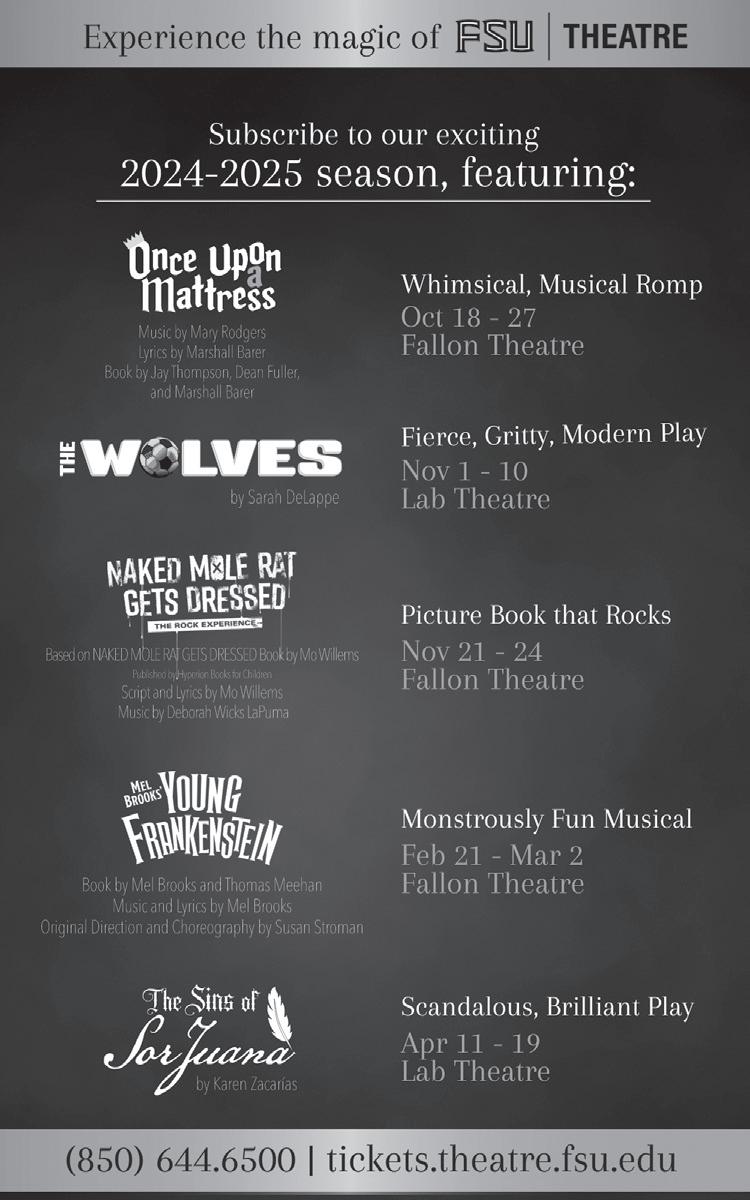

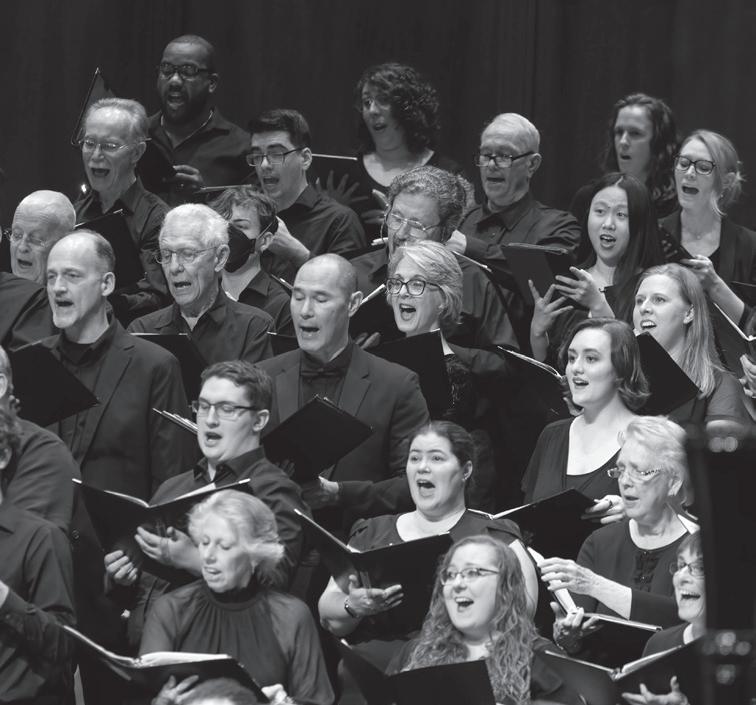
Les and Ruth Ruggles Akers
Dr. Pamela T. Brannon
Richard Dusenbury and Kathi Jaschke
Bob Parker
Margaret and Russ Dancy
Louie and Avon Doll
Patrick and Kathy Dunnigan
Kevin and Suzanne Fenton
Michael Killoren and Randy Nolan
Jim and Betty Ann Rodgers
Paula and Bill Smith
Jo and Tate Todd
Albert and Darlene Oosterhof
Todd and Kelin Queen
Karen and Francis C. Skilling
Bret Whissel
Kathy Wright
Marty Beech
Kathryn M. Beggs
Karen Bradley
Scott and Suzi Brock
Steve and Pat Brock
Brian Causseaux and David Young
Bonnie and Pete Chamlis
Mary and Glenn Cole
Sandy and Jim Dafoe
William H. Davis
Patrice Dawson
F. Marshall Deterding and Dr. Kelley Lang
Diane and Jack Dowling
Ron Erichson / Beth Frederick
Joy and James Frank
William Fredrickson and Suzanne Rita
Byrnes
Ric Gauthier
Dr. and Mrs. Douglas Henricks
Dottie and John Hinkle
Todd S. Hinkle
Matt and Holly Hohmeister
The Jelks Family Foundation, Inc.
Alexander and Dawn Jiménez
Emory and Dorothy Johnson
Wade Johnson and Dr. Laura Rosner
Greg and Margo Jones
Martin Kavka and Tip Tomberlin
Dennis G. King, Esq.
Robert and Karen Large
Annelise Leysieffer
Nancy and Jeff Lickson
Linda and Bob Lovins
William and Gayle Manley
Ken and Kay Mayo
Robert R. and Patricia H. McDonald
DeWitt and Kathy Miller
Marian and Walter Moore
Ann W. Parramore
Almena and Brooks Pettit
Robert and Caryl Pierce
Mary Anne J. Price
David and Joanne Rasmussen
Mark and Carrie Renwick
Lawrence and Lisa Rubin
Ken and J.R. Saginario
Lane and Fraser Smith
Greg Springer and Jonathan Jackson
Richard Stevens and Ron Smith
Lee Stewart
Joyce Andrews
Stan and Tenley Barnes
Mary S. Bert
Marcia and Carl Bjerregaard
Beverley Booth
Sara Bourdeau
Joan and Kip Carpenter
Carol J. Cooper
Malcolm A. Craig
Rochelle M. Davis
Pamala J. Doffek
Judith Flanigan
John S. and Linda H. Fleming
Bonnie Fowler
L. Kathryn Funchess
Debbie Gibson
Ruth Godfrey-Sigler
Bryan and Nancy Goff
Harvey and Judy Goldman
Kay Hall
Michael Hanawalt and Justine Sasanfar
Dr. Albert Henry
Jerry and Bobbi Hill
Madeleine Hirsiger-Carr
Jane A. Hudson
Sally and Dr. Link Jarrett
Judith H. Jolly
Arline Kern
Jonathan Klepper and Jimmy Cole
Elna Kuhlmann
William and Ma’Su Sweeney
Anne van Meter and Howard Kessler
Steve M. Watkins and Karen S. Brown
David and Jane Watson
Stan Whaley and Brenda McCarthy
Sonya L. Wilcox
John and Jeanie Wood
Donna Legare
Mary Lovell
Joan Macmillan
Mary “Jo” Mansfield
Victoria Martinez
Neil Mooney
Ann and Don Morrow
Joel and Diana Padgett
Thomas Parrish
Marjorie J. Portnoi
Karalee Poschman
David Reed
Edward Reid
Carol Ryor
Jill Sandler
Paula S. Saunders
Jeanette Sickel
Susan Sokoll
Alice C. Spirakis
Judy and Mike Stone
George S. Sweat
Marjorie Turnbull
Ed Valla
Margaret Van Every
Sylvia B. Walford
Geoffrey and Simone Watts
Drs. Heidi Louise and Christopher Williams
Jeff Wright
Patricia C. Applegate
Michael Buchler and Nancy Rogers
Judy and Brian Buckner
Marian Christ
Mary and David Coburn
Carla Connors and Timothy Hoekman
Kirk and Michelle Croasmun
Jane Daniel
Geoffrey Deibel
Joseph Feheley
The Fennema Family
Fred Forsythe
Bonnie Gaughan-Bailey
Gene and Deborah Glotzbach
Laura Gayle Green
Richard Green
Donna H. Heald
Linda Husbands
Jayme and Tom Ice
Louise Jones
William and DeLaura Jones
Joseph Kraus
Paige McKay Kubik
Silky and John Labie
Dottie Lee
Sandra Leis
Eric Lewis
Mari Magro
Lealand and Kathleen McCharen
Annette Nelson
Janet Newburgh
Martha Onate
Becky Parsons
William Peterson
Joe, Amanda, Leah, Laura Price
Margaret S. Reed
Sanford A. Safron
John Scholz
Louise Simons
Janet Smith
Susan P. Stephens
Allison Taylor
C. Richard and Phrieda L. Tuten
Scott and LaDonna Wagers
Karen Wensing
Samantha Ynclan
Willa Almlof
Florence Helen Ashby
Mrs. Reubin Askew
Tom and Cathy Bishop
Nancy Bivins
Ramona D. Bowman
André and Eleanor Connan
Janis and Russell Courson
J.W. Richard Davis
Ginny Densmore
Nancy Smith Fichter
Carole Fiore
Patricia J. Flowers
Hilda Hunter
Julio Jiménez
Kirby W. and Margaret-Ray Kemper
Beethoven & Company
Patsy Kickliter
Anthony M. Komlyn
Fred Kreimer
Beverly Locke-Ewald
Cliff and Mary Madsen
Ralph and Sue Mancuso
Meredith and Elsa L. McKinney
Ermine M. Owenby
Mike and Judy Pate
Laura and Sam Rogers
Dr. Louis St. Petery
Sharon Stone
Donna C. Tharpe
Brig. Gen. and Mrs. William B. Webb
Rick and Joan West
John L. and Linda M. Williams
WFSU Public Broadcast Center
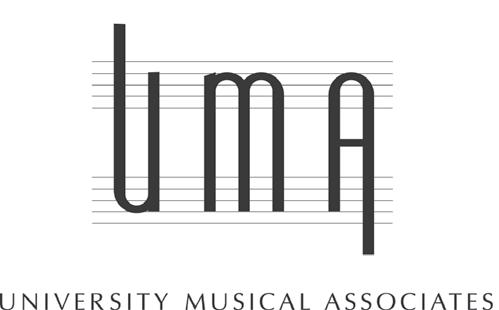
The University Musical Associates is the community support organization for the FSU College of Music. The primary purposes of the group are to develop audiences for College of Music performances, to assist outstanding students in enriching their musical education and careers, and to support quality education and cultural activities for the Tallahassee community. If you would like information about joining the University Musical Associates, please contact Kim Shively, Director of Special Programs, at kshively@fsu.edu or 850-645-5453.
The Florida State University provides accommodations for persons with disabilities. Please notify the College of Music at 850-644-3424 at least five business days prior to a musical event if accommodation for disability or publication in alternative format is needed.